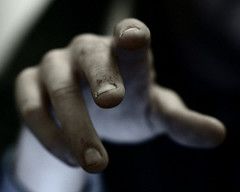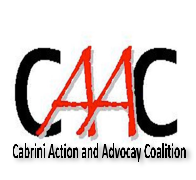
Human trafficking is one of the top crimes in the U.S and the world today. It is a form of modern-day slavery. Many people are trying to put a stop to this issue and help those affected.
There are multiple people at Cabrini University that are willing to help this cause.
Cindy Ross works in the library and teaches some classes at Cabrini. One of the classes she teaches is ECG 200: Human Trafficking. Ross got involved with anti-human trafficking because she knew someone who had experienced it.
Ross said, “To me, it was kind of personal because I knew someone who that had happened to and I really found that I would like to help victims and not see someone else fall prey to the kinds of things that this young woman fell prey to.”
In the class, the students learn about what traffickers do and what the victims go through. They also learn about different organizations that are working to combat human trafficking.
The class worked an event that will help victims of human trafficking. On Dec. 5, a pocketbook and purse sale took place in Grace Hall atrium. New or slightly used designer purses were sold at discounted prices. There was also a raffle to win some prizes.
People donated money, gift cards, clothing and other items that trafficking victims needed to Cabrini Closet.
The Cabrini Closet was created by the missionary sisters of the sacred heart to directly help female survivors. The missionary sisters also have an organization, Cabrini Action and Advocacy Coalition. According to Mother Cabrini.org, they work to put a stop to human trafficking and support the rights and dignity of immigrants.
Sophomore Nicole Holland, who is in ECG 200, took the course to learn more about the human trafficking.
Holland said that one of the most shocking things she learned about human trafficking is, “It occurs in America a lot more often than you think it would.”
Karol Brewer works with the Missionary Sisters of the Sacred Heart of Jesus in the Cabrini Cottage, with CAAC and with the Cabrini Closets.

Brewer said, “We originally were trying to think of fundraisers that were fun, where people didn’t have to dedicate a lot of time. We could price items a lot higher than we do, but it’s a way to have an audience. We can talk about human trafficking, raise awareness [and] answer questions maybe to some people that know very little about human trafficking. That’s the audience we’re trying to attract.”
According to Polaris Project, there are 20.9 million victims all over the world. The industry also brings in $150 billion annually.
Anyone from anywhere can be a victim. Anyone from children to young adults and even sometimes older than that can be trafficked.
The Polaris Project website also says that one out of six runaways who reported to the Center for Missing and Exploited Children were victims of sex trafficking. Many victims of sex trafficking are tricked and lied to and forced into having sex, for money. The traffickers make the victims believe that they love them and play with their emotions, which may make them feel obligated to stay.
Sex trafficking is not the only form of human trafficking. There is also labor trafficking. Labor traffickers force their victims into doing many forms of work.
According to the Polaris Project, some of the industries that have people forced into doing labor include construction, domestic work, manufacturing, agriculture and more. The International Labor Organization estimated that there are 4.2 million people being labor trafficked. According to the United States Department of Labor as of September of last year, the list of goods produced by child labor or forced labor comprises nearly 140 goods from more than 70 countries.
Sophomore Sumi Sunny, who also takes ECG 200, said, “I didn’t know about [human trafficking] at first. Progressing through, I feel like I’m happy taking the class because you get to help out.”
Human trafficking of all kinds happens everywhere, even in the smallest towns. There are several ways to recognize and know what a human trafficking victim looks like. There are several signs that, if recognized, could save a victims life. Some of these signs are poor physical or mental health, working excessive or unusual hours, not being in control of personal information, such as bank account, and more.
Brewer said, “One of the most shocking things when I first became involved in anti-human trafficking was, I knew it took place here in the United States but I always thought it just took place in the big cities— Philadelphia, Miami, New York. You know, it takes place everywhere. It literally takes place five miles from where we’re standing. I think a lot of people don’t realize that it encompasses all walks of life. Even right here at King of Prussia, which you consider a really safe area. You have facilities there— the civic center, there’s the casino, lower price hotels— those are all draws for trafficking to take place. A lot of recruiting is done at places like King of Prussia Mall. The traffickers have become so smart and with social media, it’s so much easier for them to recruit.”


